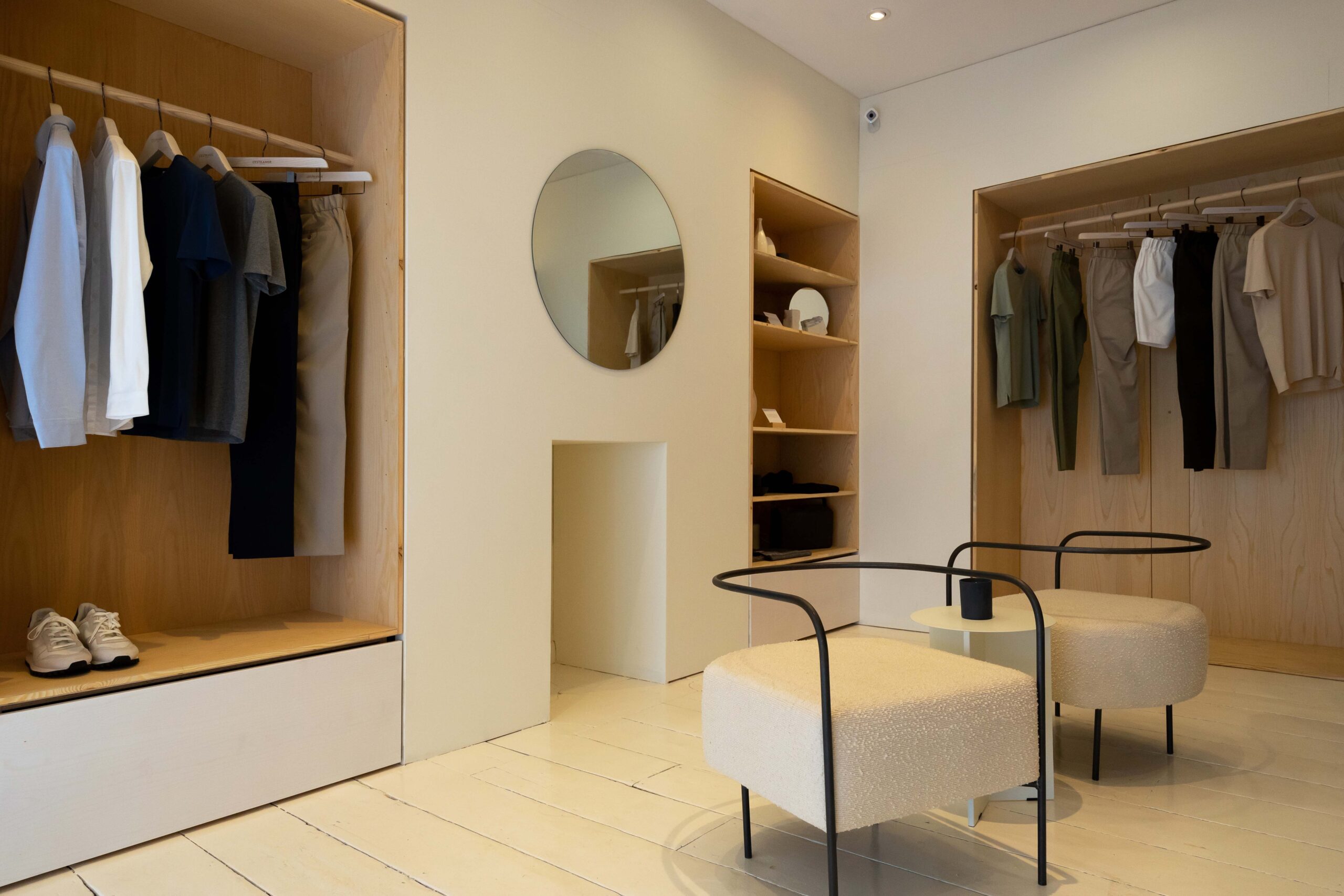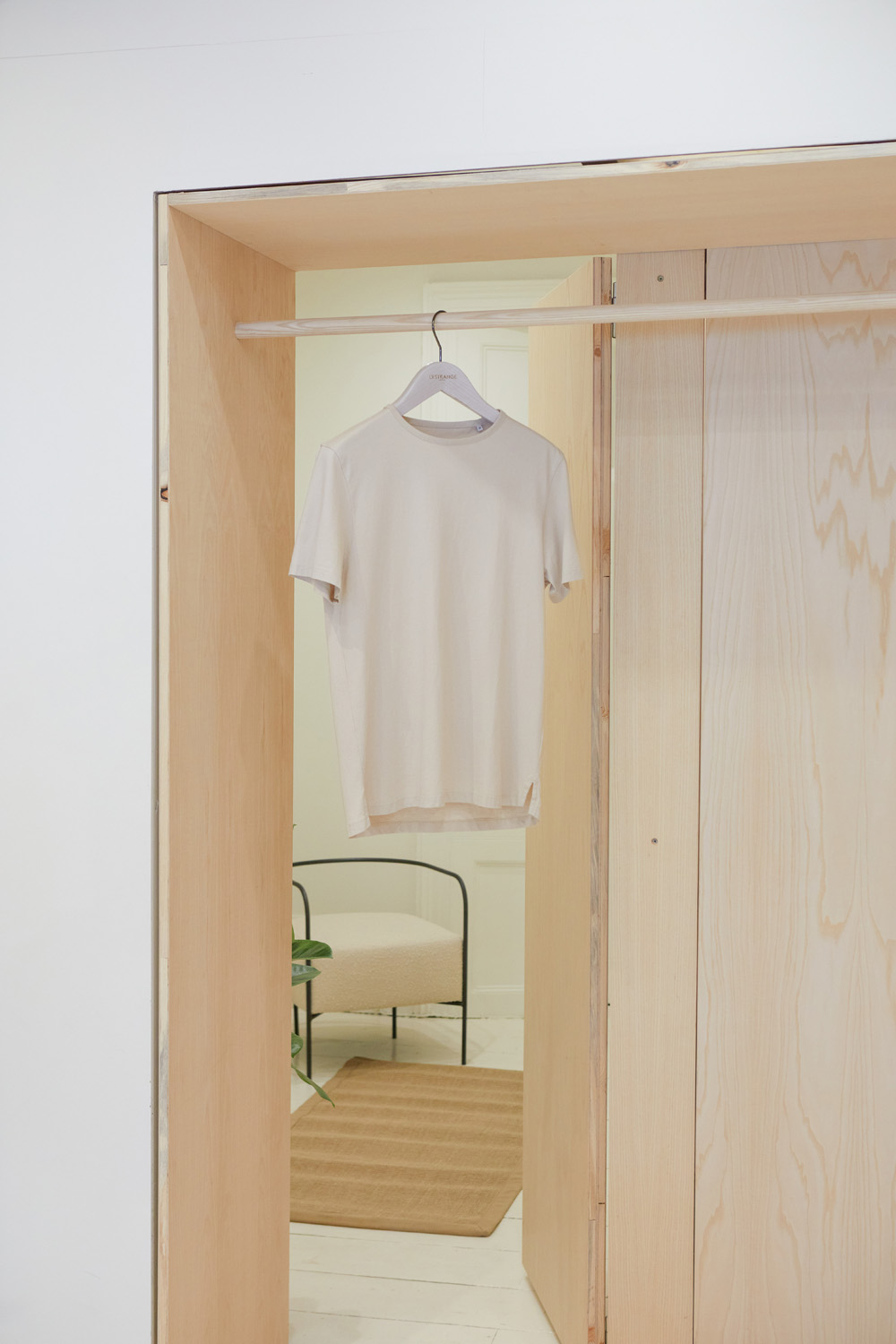The story of a start-up trying to future-proof the fashion industry – Tom Horne and Will Greene want to restructure our relationship with our wardrobes.
It all started with the humble hoodie. Will Green and Tom Horne, founders of L’Estrange London, both found themselves questioning why everyone’s favourite piece of clothing was limited to wearing when lounging. Determined to prove that hoodies can be both smart, tailored and comfortable, their signature piece, the Hood, was born. Experiencing international success within the first year, it wasn’t long before they were swept up in the whirlwind of seasonal fashion drops.
Fast forward to 2017 and after raising enough external investment, Tom and Will stepped back from this rollercoaster business model to launch the store’s second chapter, L’E. Instead of selling to buyers, they went direct to consumers with their new streamlined collection of modular menswear.
Pursuing an ethos of ‘with less, do more’, L’Estrange wants to simplify men’s wardrobes by offering timeless and versatile pieces for every occasion. Their modern clothing system, built on the principles of the circular economy, rejects disposable mindsets and seasonality in favour of longevity.
For Tom and Will, sustainability is more than a buzzword – it’s a lifestyle choice. For years, the fashion and textile industry has faced heavy criticism for its ineffective and wasteful modus operandi. According to WRAP UK, £30 billion worth of unused clothing is gathering dust in wardrobes, while £140 million worth of clothing ends up in the landfill each year.
Guided by the philosophy of essentialism, a forward-thinking business structure and a product design mindset, Will Green recounts L’Estrange’s modest beginnings as a passion project and charts their journey to global success.


What was the inspiration behind a modular men’s wardrobe?
It was a very simple design problem: why doesn’t a wardrobe function? Why do we go to work and sometimes go home to get changed into another set of clothes before going out? Stop and think this through for a second; it’s probably the most dysfunctional, time-wasting aspect of your daily routine! We wanted to make more functional clothes that simplify the way that men dress, is less impactful on the planet and allows you to focus on more important things in your life.
Drawing on the principles of essentialism, we wrapped up our ethos into one phrase: with less do more. With our second chapter, we raised enough external investment to pull out of the crazy fashion circus of seasonal drops. Before, we were working with stores in Japan, America, and Europe and our buyers didn’t really get our idea.
Fashion brands seem to be heading towards greater sustainability, but the industry is quite reluctant as a whole. Why do you think that is?
The reluctance is predicated on the fact that whether you’re a fast fashion house or a luxury fashion house, it’s difficult to suddenly say we’re going to move to a permanent collection, which was obviously our strategy. It would be too disruptive because you’ve got too many stakeholders in your supply chain that rely on you. Because their fundamental business model is based on buying more, brands are encouraging overconsumption – the real villain to our cause.
It’s frustrating that the sustainability conversation overshadows this problem by focusing on where your product is made and what it’s made from. The reality is that buying the world’s least impactful, least water-consuming cotton top isn’t the solution. If you only wear it once, compared to a less eco-friendly top that you wear more often, it’s already more impactful in a way.


Can you tell us about how L’Estrange continues to evolve while retaining a permanent collection?
Over the last couple of years, we’ve grown at quite a rate and it’s mostly just been driven by word of mouth. Our customers come back because they know that the product they want will still be here in the next two or three years. The only difference is that we might have made some improvements as we’re constantly striving to innovate. For example, we’ve set a goal to buy 100 per cent of our cotton from organic and responsible sources. We only buy recycled synthetic yarns and launched swim shorts made from a mixture of ocean waste and recycled polyester, like fishnets.
We’re also innovating to see if we can make all of our t-shirts out of a mixture of organic cotton and Kapok. Kapok is like a wonder fibre that comes from a tree that doesn’t need much water, is naturally regenerative and has all these properties that make it low-impact. It’s great for the local community and doesn’t use pesticides but the t-shirt itself doesn’t change. The shape and size will remain as it was.
Your new store on Westbourne Grove opened quite recently. What was the design process behind it?
Fred Rigby helped us with our stores. Our clothes are designed to be mixed and matched. We wanted to take that and apply it to our store, so each piece is moveable, collapsible and modular by nature – we don’t want to waste anything. We’ve built the store out of this brilliant wood, blockboard, which is very low impact. We partnered with local companies like Good Waste, which works with Selfridges to create all sorts of products made from waste. For example, they make lamps from reclaimed perforated steel and candles from beeswax.
L’Estrange has always been inspired by furniture designers that have embodied the spirit of timeless design. You tend to find that more in a lot of the iconic designers like Dieter Rams. We’ve got original pieces of his in our store in Central London, so we’ve put a few of them in Westbourne Grove. It’s all about showcasing our values as much as it is about selling our product. We want people to leave the store with that feeling of having engaged with a brand that cares.



You have a very important sustainable drive at the centre of your business, which is a result of your’s and Tom’s different approaches and overall dynamic. Can you tell us more about what drives this ethos?
I’m very passionate about the environment and really interested in how we can change the pendulum, or move it back even, from an impactful, resource-intensive process by enhancing your carbon footprint.
We’ve finally got to the stage where we’ve got the scale and the consultants to maximise all of our data on how much carbon is produced at each stage, going all the way back to the source. Then, we can see how we can offset them. I think that should be the standard and more people are striving towards that. Having said that, I think you can go further still and if you have the power as a business, why not double-offset your carbon impact? We are in a real state of emergency with the climate and we really want L’Estrange to be a part of that solution.
That comes a little bit more from me and then Tom is very much a designer’s customer. He’s so knowledgeable about all the designers that are informed about innovative solutions, like Dieter Rams’ and his ten principles for good design. The blend of mine and Tom’s approaches gives L’Estrange the unique spin that it has.




